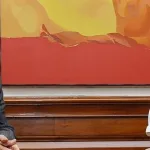Technology is evidently evolving in parallel with the end user, and use cases are increasing with the emergence of new avenues of payments. Payments form the core of any financial institution and it’s becoming imperative for central banks to provide avenues that offer new world functionalities for relevance. Central Bank Digital Currency (CBDC) is one such avenue that aims to help central banks facilitate financial services widely. The RBI foresees e-Rupee/Indian CBDC – that is, the digital form of the fiat currency issued and regulated by it – as the next-generation payment mode that is seamless, ubiquitous and anonymous, delivering customers value and a satisfying experience.
e-Rupee can act as a viable alternative to paper currency, the issuance and circulation of which entail a long process with the government incurring heavy costs. For example, for every INR 100 note, the cost estimate is around 15%–17% of the entire expense in a four-year lifecycle, including printing, distribution and returning due to soilage. As cash circulation increases, it puts pressure on distribution and storage channels, along with the environment, owing to its carbon footprint.
A larger amount of cash in circulation means pressure on regulators and governance in terms of printing, distribution and storage, thus posing several risks such as counterfeits, spoilage and security risks. Counterfeits are a huge risk with the RBI reporting an increase in fake 2,000 and 500 currency notes in fiscal year 2021–22. A major risk with carrying cash is the risk of loss or theft. e-Rupee gives central banks better control over usage and distribution. This is one of the primary motivations for the RBI to launch CBDC.
Launching the e-Rupee in India would also mean taking a step towards a digital economy, given the rise in the adoption of mobile and internet-based payments, besides improving the cumbersome cross-border transaction process. One of the top priorities of the G20 has been to enhance cross-border payments and it has been implied that CBDC can be an appropriate tool.
Cross-border transactions have always involved time-consuming processes laden with strict compliance checks owing to their dependency on the correspondent bank’s availability and time zones. Financial institutions which have reserves in the RBI can transact in CBDC and make it easier to reduce counterparty risks. CBDC is also expected to accelerate the process by automating the method of transaction and settlement. Some other potential areas where CBDC can be leveraged to ease the process of transactions include government securities and international forex trade.
The design of CBDC depends on the functions it is expected to perform, as the RBI has underlined in its concept note. The implications of CBDC for payment systems, monetary policy, and the structure and stability of the financial system will be determined by the design. A primary consideration is that the design features of CBDC should be least disruptive.
Around 114 countries are exploring CBDCs, and as many as 60 are at an advanced stage. Countries that have already launched a retail CBDC (R-CBDC) are the Bahamas, Cambodia, East Caribbean Union, Nigeria, China and Jamaica. Central banks which are exploring an exclusive wholesale CBDC (W-CBDC) include Singapore, Australia, Saudi Arabia and the European Union.
Banks are collaborating with third-party providers to boost innovation in the payment ecosystem. The government has provided platforms such as Unified Payments Interface (UPI) to encourage digital payment adoption. Consequently, the RBI has reported a two-fold increase in digital payments in India since 2018. In 2022, India registered a record of ₹149.5 trillion UPI and card transactions.1 As per the India Digital Payments Annual Report, UPI clocked over 74.05 billion transactions in volume and ₹126 trillion in terms of value.
In December 2022, the RBI launched the pilot for retail e-Rupee. This pilot was launched with the aim of creating a digital version that is similar to paper currency and gauge usage for ensuring a seamless transition to CBDC. The RBI is rolling out the digital currency via an intermediary model, with initial participation from eight banks in the country. As of February 2023, this pilot project was being conducted in five cities within closed user groups comprising merchants and customers on an invitation-basis only. Under this project, the RBI issues CBDCs to intermediary banks that issue digital wallets to the end users. Transactions will be performed in the same way as those involving physical currency. While the e-Rupee will not earn any interest, it can be converted into deposits.
Central banks don’t intend to use CBDCs for monetary policy operations as making CBDCs interest bearing carries several risks such as cannibalising other short-term investment vehicles. Such a move could lead to adverse effects on the economic structure, such as shifting of deposits from banks to CBDC tokens.
Most countries follow a hybrid model so that user interactions are seamless, and the end-to-end framework can be easily scaled up on the back of an application programming interface (API), which can support a higher throughput compared to the pure DLT framework on the user interaction end.
With rapid adoption and widespread usage, UPI has become a very popular mode of payment in India. UPI has been instrumental in accelerating the penetration of digital payments in India, making it a potential platform that can be merged with CBDC. This blend will serve as a better payment solution offering instantaneous fund transfers and accessibility.
India’s CBDC architecture is based on the two-tiered model which supports a majority of CBDC implementations across the globe. Under this model, banking intermediaries distribute CBDCs to the population based on the MO supply provided by the central bank. A hyperledger fabric powers the interaction between central banks and commercial banks. Commercial banks and other authorised intermediaries are present as nodes in the distribution tier through which minted R-CBDC tokens are transferred from the central bank.
India is one of the largest economies in the world with a large and diverse population, so there are varied expectations from the CBDC pilot with several use cases and business models expected to emerge as the ecosystem scales up.
(The author can be connected through email on [email protected]. Twitter/ X: @haniefmha)




